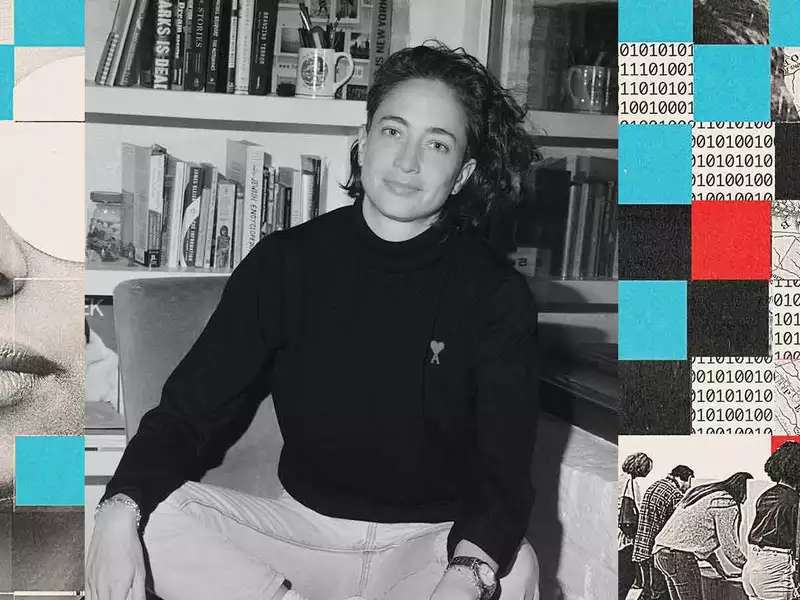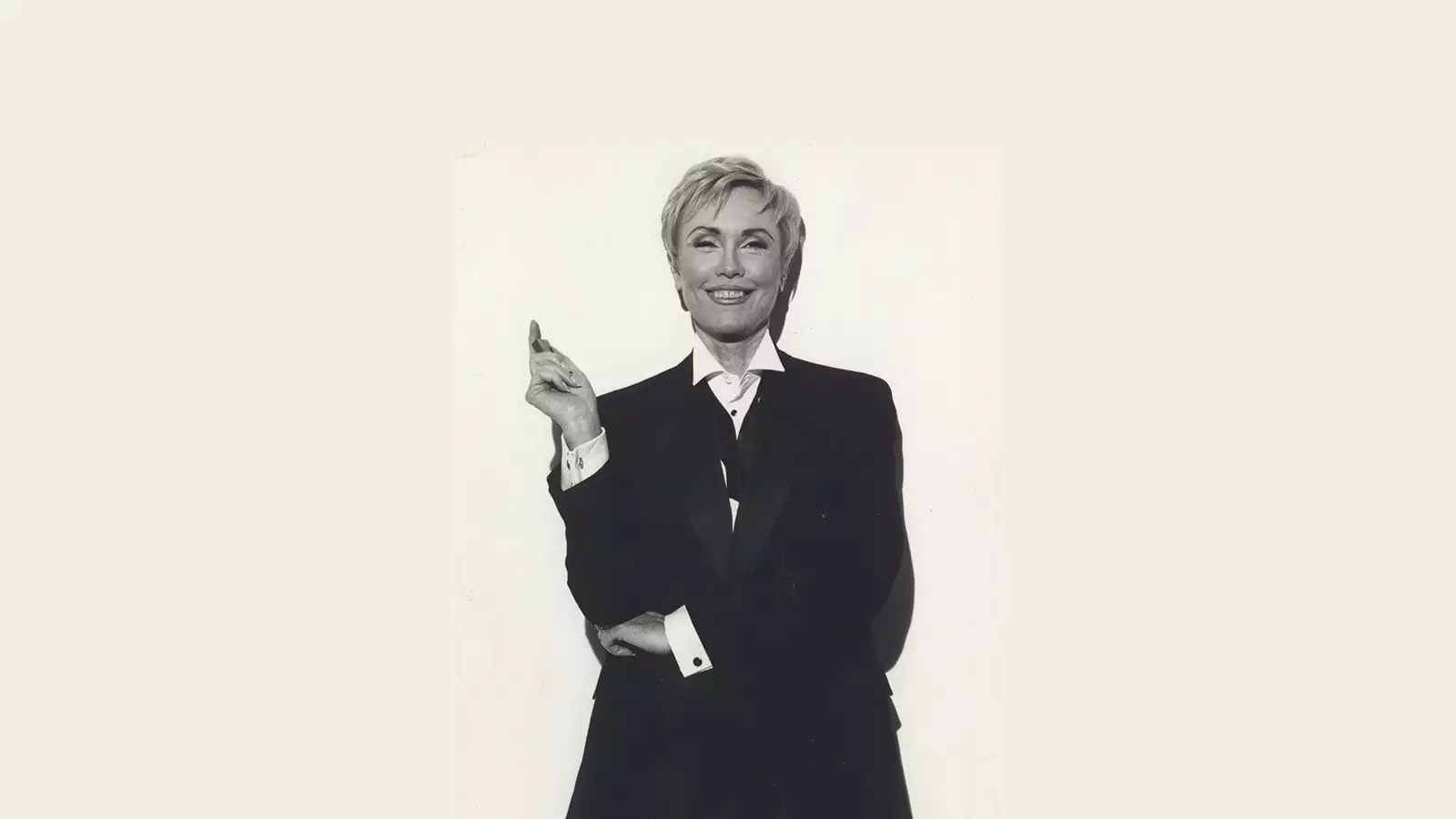
Paola Ramos ’09 explains why Latino voters must be better understood

Last year, staff from Barnard Archives completed processing the Nancy Friday Papers, a gift from the author and pop psychologist (photo above) who passed away in 2017. Delayed because of pandemic pauses and the time it takes to handle sensitive materials like Friday’s — who believed that “wild, delicious, wonderful sex” could exist “alongside good manners" — the donation complements existing archival materials on women’s sexuality. It also represents an uptick in donations from donors outside of the College community who recognize its well-established feminist focus, said Martha Tenney, director of Archives and Special Collections.
“Over the past couple of years, we’ve been trying to think critically about the resources we want to provide for research both for the Barnard community as well as international and national researchers,” Tenney said, of accepting Friday’s donation. “We are building collections that document not only the history of Barnard as an institution and the people who have come into contact with the institution but also broader feminist histories.”
Amid the broader feminist histories rest several niche areas, including archives on sex-positive feminist thought that the Friday papers will help buttress. This includes materials from the Barnard Center for Research on Women (BCRW) spring 1982 Scholar & Feminist Conference on Sexuality, which is often cited as a high watermark of the “feminist sex wars,” when anti-pornography feminists crossed intellectual swords with sex-positive thinkers like Friday.
For her part, Friday was most decidedly sex-positive. “How could it be, you might ask, that women today, at the turn of the century, would still think they were the only Bad Girls with erotic thoughts? What kind of prison is this that women impose on themselves?,” she asks rhetorically in the 25th anniversary edition of My Secret Garden: Women's Sexual Fantasies.
Friday’s openness drew thousands of letters from fans who shared deeply personal details about their sex and fantasy lives, all of which can be found in her papers. Such materials couldn’t be donated to just any institution. When the collection was first offered to Columbia University, their archival team instead recognized that the content would be a better fit at Barnard, which has garnered the trust of donors, fellow colleagues, and institutions seeking the right home for feminist material of every ilk.
The sexually explicit material prompted Barnard archivists to reach out to colleagues with similarly sensitive collections to come up with an ethical approach that preserved the privacy of those who probably didn’t expect their letters to end up in an archive. As a result, processing and ultimately accessing this archive required a different approach from other collections. Interested researchers must sign a nondisclosure agreement before being permitted to see the papers, the only requirement of its kind in Barnard’s archives.
“Before we began any major processing, we [had to] identify core issues and questions related to privacy and access within the collection,” wrote graduate assistant Mia Ciallella ’19 in the Archives’ blog.
Together with records coordination and processing archivist Olivia Newsome, Ciallella thoughtfully created theme descriptions used as finding aids.
“Due to the explicit, and at times offensive, content in the collection, we wanted to find a way to accurately describe the collection without using harmful or stereotypical language, while also giving researchers a list of potential triggers for sensitive materials,” Ciallella wrote.
Regardless of a collection’s sensitive or controversial nature, the end game remains the same, said Tenney.
“Accepting an archival collection is commitment, essentially, in perpetuity,” she said. “When we embark on these kinds of relationships, we want to do so with the understanding that the collections will be used and that they will contribute to scholarship. At Barnard, we want collections to be useful for students and for the feminist scholarship that happens here.”
Tenney said that focusing on “feminist world-making” includes activism, organizing, and art-making, as well as addressing “archival silences and gaps” within the Archives’ overall feminist collection. The team intentionally seeks out voices and experiences that might not otherwise find their way into an academic setting.
Another recently acquired collection came from the Coalition for Women Prisoners (CWP). That donation provides materials on anti-carceral organizing and the experiences of incarcerated women throughout New York State. The population of imprisoned women has grown substantially over the past 40 years, but their narratives are woefully underrepresented in archival collections.
Because CWP has seen a rotation of leaders and locations over the years, incorporating the donation meant accepting a collection from multiple donors at multiple locations over time. Tenney said that some documentation understandably went missing, a gap the Barnard archivists were able to fill through oral histories conducted by Barnard students, supported by a Reproductive Health Grant from the College. For that, the team focused specifically on interviewing people who had worked on reproductive justice campaigns within the CWP.
“That included campaigns to ban the shackling of pregnant women while they were in the hospital giving birth, campaigns to allow for reduced sentencing for criminalized survivors of domestic violence, and campaigns for family members who are incarcerated to be located in jails and prisons that are closer to their family,” said Tenney.
Though the CWP coalition came from outside the Barnard community, like the Nancy Friday Papers, Barnard’s connections and reputation played a role. In the case of the CWP, the BCRW once again entered the fore.
It’s no coincidence that as the collection has grown, so too has its reputation as a safe haven for sensitive material. Tenney pointed to the Sabra Moore Women’s Art Movement Collection and the Dianne Smith Papers, documenting the New York art scene from the 1970s through the 2000s, as other “outside” donations requiring a discerning mindset.
Moore organized anti-war protests and worked in New York’s first abortion clinic. Smith, based out of Harlem, has shown her work primarily in nonprofit and Black-owned spaces.
“Feminist scholarship doesn’t necessarily just mean the study of the history of feminism,” said Tenney. “It means thinking about any area of study using a feminist lens.”